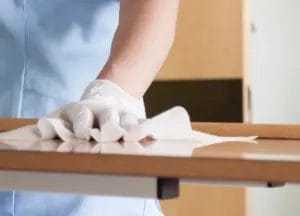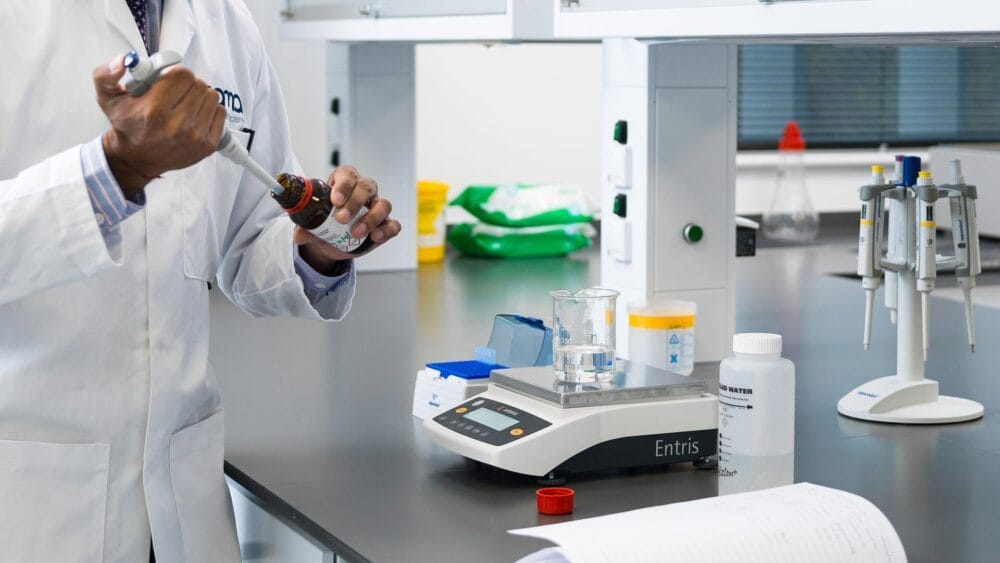Posted
13th March 2019
Research
A new randomised controlled intervention study published in the Lancet Infectious Diseases by Professor Brett Mitchell and a group of Australia researchers reports that introducing an environmental cleaning bundle reduced the rate of HCAI.

A new randomised controlled intervention study published in the Lancet Infectious Diseases by Professor Brett Mitchell and a group of Australia researchers reports that introducing an environmental cleaning bundle reduced the rate of HCAI.
The study was a powerful randomised controlled trial performed in 11 Australian hospitals. The cleaning bundle was a multimodal intervention, focusing on optimising product use, cleaning technique, staff training, auditing and feedback, and communication. The bundle was aimed at improving both routine daily cleaning and cleaning/disinfection at the time of patient discharge. The intervention did not require any new technology or tools – but was simply a reconfiguration and standardisation of approach within the existing resources allocated to cleaning in each hospital. At the start of the intervention in each hospital all cleaning staff received face-to-face training from the trial co-ordinator. This training also attempted to standardise cleaning technique. Another element of the bundle was a focus on communication, encouraging daily contact between ward leaders and cleaning staff, and board-level engagement in the cleaning process. There was also a review of the local approach to ensure that cleaning product use was optimised.
The impact of the cleaning bundle was measured by reviewing rates of key HCAI, and also by monitoring the removal of fluorescent markers from key sites in patient rooms and bathrooms. The rate of VRE identified in sterile infections reduced significantly by 37% following the implementation of the bundle. The rate of C. difficile infection and S. aureus bloodstream infection did not reduce significantly following the implementation of the bundle of interventions. It’s important to note the there was no focus on ensuring that an appropriate sporicidal disinfectant was used to tackle surfaces that could have been contaminated with C. difficile spores, so it’s perhaps not surprising to see that the rate of C. difficile was not reduced significantly. Many S. aureus bloodstream infections are ‘endogenous’ (where the patients themselves are the source of the infection), so less likely to be affected by an environmental intervention.
The intervention significantly improved the removal of fluorescent markers in both rooms and bathrooms. Interestingly, this continues to improve throughout the intervention period, so that 86% of marks were removed from bathrooms and 76% from rooms by the end of the intervention compared with 43% in bathrooms and 37% in rooms before the intervention. These findings reinforce that the reduced rates of HCAI were related to an improved standard of cleaning.
This study reinforces that basic steps can be taken to improve the efficacy of hospital cleaning, focussed on the training and education of staff, and that these improvements can improve patient outcomes.

The study was a powerful randomised controlled trial performed in 11 Australian hospitals. The cleaning bundle was a multimodal intervention, focusing on optimising product use, cleaning technique, staff training, auditing and feedback, and communication.
The bundle was aimed at improving both routine daily cleaning and cleaning/disinfection at the time of patient discharge. The intervention did not require any new technology or tools – but was simply a reconfiguration and standardisation of approach within the existing resources allocated to cleaning in each hospital. At the start of the intervention in each hospital all cleaning staff received face-to-face training from the trial co-ordinator. This training also attempted to standardise cleaning technique. Another element of the bundle was a focus on communication, encouraging daily contact between ward leaders and cleaning staff, and board-level engagement in the cleaning process. There was also a review of the local approach to ensure that cleaning product use was optimised.
The impact of the cleaning bundle was measured by reviewing rates of key HCAI, and also by monitoring the removal of fluorescent markers from key sites in patient rooms and bathrooms. The rate of VRE identified in sterile infections reduced significantly by 37% following the implementation of the bundle.
The rate of C. difficile infection and S. aureus bloodstream infection did not reduce significantly following the implementation of the bundle of interventions. It’s important to note the there was no focus on ensuring that an appropriate sporicidal disinfectant was used to tackle surfaces that could have been contaminated with C. difficile spores, so it’s perhaps not surprising to see that the rate of C. difficile was not reduced significantly. Many S. aureus bloodstream infections are ‘endogenous’ (where the patients themselves are the source of the infection), so less likely to be affected by an environmental intervention.
The intervention significantly improved the removal of fluorescent markers in both rooms and bathrooms. Interestingly, this continues to improve throughout the intervention period, so that 86% of marks were removed from bathrooms and 76% from rooms by the end of the intervention compared with 43% in bathrooms and 37% in rooms before the intervention. These findings reinforce that the reduced rates of HCAI were related to an improved standard of cleaning.
This study reinforces that basic steps can be taken to improve the efficacy of hospital cleaning, focussed on the training and education of staff, and that these improvements can improve patient outcomes.
SHARE THIS ARTICLE
Tags
Latest News
Introducing HEXI HUB: A seamless transition in our product line
We’re pleased to announce an update to our product offering…
Innovative solutions for tackling Carbapenemase-producing Enterobacteriaceae (CPE) at King’s College Hospitals
King’s College Hospital NHS Foundation Trust, one of London’s largest…
Gloves Off: reducing unnecessary plastic waste during environmental cleaning and disinfection
In this blog, Dr Phil Norville discusses the momentum-gaining ‘Gloves…
Gloves Off: Navigating SDS sheets and skin safety claims in environmental decontamination products
In this blog, James Clarke (Head of R&D, Science &…




